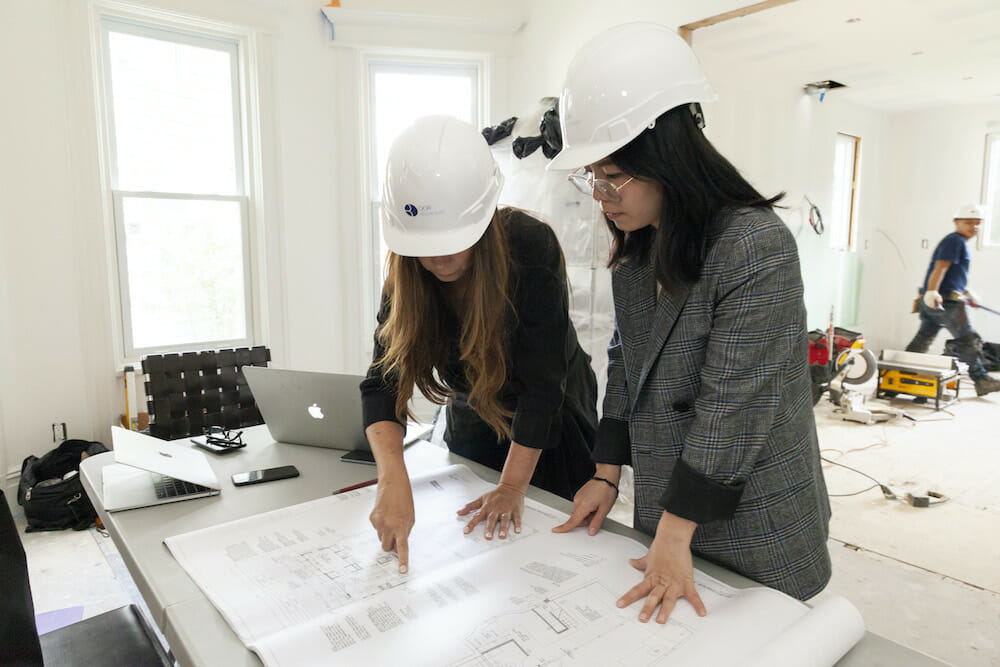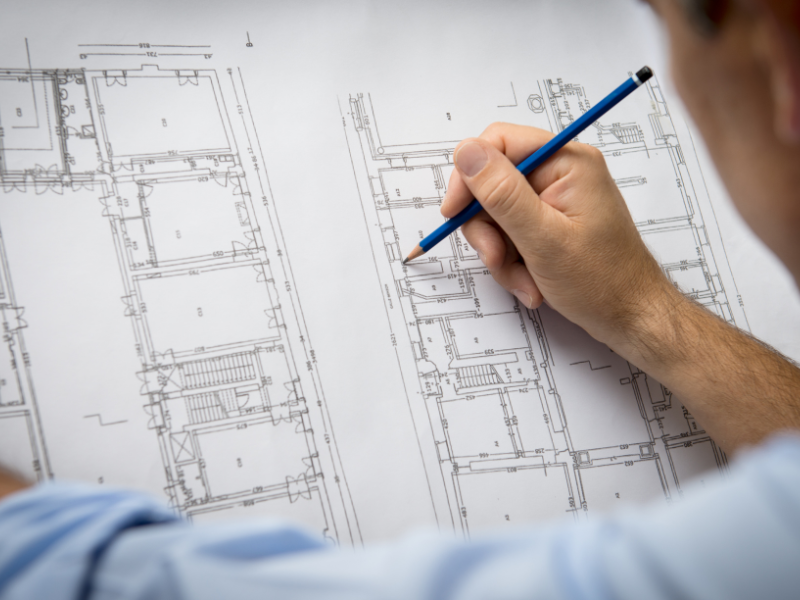Architect Collaboration Tips for Working with Contractors and Builders
Architect Collaboration Tips for Working with Contractors and Builders
Blog Article
Comprehending the Diverse Job Paths Available for Aspiring Architect
As an aspiring Architect, you have a world of profession courses waiting for you. Whether you're drawn to typical design or the subtleties of sustainable design, there's a niche that lines up with your rate of interests.
Typical Architecture: Designing Structures and Structures
Typical design concentrates on designing structures and frameworks that mix functionality with aesthetic charm. As you discover this area, you'll value the elaborate equilibrium in between type and objective. You'll learn to attract ideas from historic styles, incorporating aspects like proportion, materials, and workmanship. Your layouts can reflect cultural heritage, showcasing regional traditions while satisfying modern demands.
You'll create abilities in preparing, model-making, and website analysis, enabling you to envision and communicate your ideas properly. Engaging with clients, you'll require to recognize their vision and equate it into viable layouts.
Additionally, developing codes and sustainability techniques are vital in your job, ensuring your structures are ecologically pleasant and safe. As you expand in your occupation, you'll discover chances in household, business, and even reconstruction projects, each offering distinct obstacles. Welcoming traditional architecture leads the way for a fulfilling job that admires the past while shaping the future.
Urban Planning: Forming Communities and Public Spaces
As an aspiring Architect, you can play a necessary function as a metropolitan coordinator, changing exactly how communities function and communicate. By using neighborhood interaction approaches, you'll ensure that citizens have a voice in shaping their setting. Plus, incorporating sustainable style concepts will help create areas that not only satisfy today's requirements but also safeguard the future.
Duty of Urban Planners
While several could assume of engineers as the single enthusiasts behind structures, metropolitan coordinators play a necessary function in shaping the broader landscape of neighborhoods and public areas. By working together with various stakeholders, you'll help make parks, transport systems, and household areas that advertise social communication and access. Your know-how in spatial layout and area characteristics enables you to visualize future growth while protecting cultural heritage.
Area Interaction Strategies
Effective area interaction strategies are vital for metropolitan coordinators to assure that the voices of residents are listened to and valued in the preparation process. To foster purposeful dialogue, you should focus on open forums and workshops where area members can share their ideas and problems. Use studies and social networks to reach a more comprehensive audience, making certain varied point of views are consisted of. Teaming up with regional companies can improve trust and assist in much deeper connections. It is necessary to supply clear details regarding decision-making procedures and proposed jobs, allowing citizens to really feel educated and encouraged. By actively paying attention and integrating comments, you'll create spaces that reflect the area's requirements, inevitably bring about more effective and lasting metropolitan settings. Welcome openness and continuous dialogue for enduring influence.
Lasting Style Principles
When designing urban rooms, integrating lasting style principles is important for developing settings that flourish both ecologically and socially. Consider incorporating environment-friendly rooms, like parks and yards, to enhance biodiversity and improve air high quality.
Designing with water preservation in mind is additionally essential-- believe regarding rainfall gardens and absorptive surface areas to manage stormwater. Involving community members throughout the planning process warranties that the rooms you develop meet their needs and motivate social communication. By embracing these concepts, you'll add to vivid, sustainable city landscapes that benefit every person.

Landscape Style: Developing Lasting Exterior Atmospheres
As you check out landscape design, you'll discover important design principles that produce useful and gorgeous outside areas. Lasting practices play an essential duty in making sure these settings thrive while reducing environmental impact. And also, you'll find a variety of occupation possibilities that enable you to make an actual distinction in how individuals engage with nature.
Design Concepts in Landscape
Comprehending design principles in landscape style is essential for creating lasting outside environments that harmonize with nature. You'll require to ponder components like proportion, range, and balance to assure your layouts feel cohesive and inviting. Incorporating native plants not just boosts biodiversity yet likewise lowers water usage, making your landscape resilient. Consider the circulation of space and how individuals engage with it; paths and seating areas ought to invite exploration and relaxation. Additionally, pay focus to seasonal changes, making with products that match the environments year-round (Architect). By focusing on sustainability and appearances, you can create exterior spaces that enrich the community and promote health. Embracing these concepts will certainly establish a solid structure for your occupation in landscape style.
Lasting Practices Overview
Sustainable practices in landscape style not only concentrate on looks but also prioritize ecological health and source conservation. By integrating native plants, you enhance biodiversity and reduce the need for chemical plant foods and chemicals. Implementing effective irrigation systems helps save water and reduces overflow, securing close-by environments. You can make rooms that promote soil health and wellness, such as using natural materials and practicing permaculture principles. Additionally, incorporating environment-friendly facilities, like rainfall gardens and porous pavements, aids in stormwater management and lowers urban warm. You contribute to a much healthier world and provide rooms that promote area connection when you develop outside settings with sustainability in mind. Eventually, these methods guarantee your layouts benefit both individuals and the setting for many years to find.
Job Opportunities Exploration
With a solid foundation in sustainable techniques, landscape architecture uses a range of career courses that allow you to make a significant effect on the atmosphere. You can work as a landscape designer, producing aesthetically pleasing and functional outside areas, or concentrate on environmental repair, assisting to revitalize damaged environments. Urban organizers commonly collaborate with landscape engineers to develop green areas in urban settings, enhancing city livability. If you're passionate concerning education, take into consideration coming to be a landscape style teacher, motivating future generations. Additionally, you might collaborate with nonprofits focused on ecological sustainability or take click to read part in study to introduce new methods. Each course not just shapes stunning environments but also cultivates a healthier earth for future generations.
Sustainable Design: Focusing on Eco-Friendly Practices
As you discover your career in style, accepting environment-friendly methods can establish you apart in an affordable area. Lasting layout concentrates on developing structures that minimize environmental impact while improving owner health. By incorporating eco-friendly materials, energy-efficient systems, and sustainable structure methods, you'll add to a greener future.
Begin by obtaining knowledge of environment-friendly accreditations like LEED or BREEAM, which can reinforce your credentials. Take into consideration exactly how all-natural light, ventilation, and thermal efficiency can maximize layout. Collaborate with engineers and environmental professionals to innovate options that minimize waste and conserve resources.
Do not neglect the significance of community involvement-- appealing regional stakeholders can inspire styles that balance with the atmosphere. As clients progressively prioritize sustainability, your proficiency in green techniques will not only attract projects however also accomplish your passion for responsible design. Welcome this vital aspect of the occupation, and watch your profession thrive.
Historic Conservation: Shielding and Bring Back Social Heritage
While you begin on your architectural trip, consider the crucial function of historical preservation in keeping our cultural heritage. This field concentrates on the security and repair of considerable structures, websites, and frameworks that inform the stories of our past. By taking part in historical preservation, you'll aid safeguard the architectural heritage that forms community identification.
As a historical preservation Architect, you'll analyze historic importance and assess the problem of structures. You'll function very closely with chroniclers and conservationists to guarantee genuine remediation methods are employed. This occupation path enables you to mix creativity with research study, enabling you to develop solutions that respect original products and craftsmanship.
Your work not just contributes to sustainability by recycling existing structures however additionally fosters a feeling of satisfaction within neighborhoods. Welcoming this path will certainly assist you come to be a guardian of background, protecting the stories and visual appeals that enrich our lives.
Inside Style: Enhancing Indoor Spaces
Historical preservation and indoor style both share a commitment to boosting the built setting, but they focus on different facets. While historical conservation stresses preserving other a framework's historical and cultural worth, interior design absolutely nos in on optimizing indoor spaces for performance and aesthetic appeals.
As an ambitious Architect, you'll locate that interior architecture allows you to blend imagination with technological abilities. You'll make rooms that not just look excellent but also promote comfort and efficiency. This field includes comprehending exactly how light, shade, and materials communicate within an area, influencing state of mind and usability.
You'll work on best site different tasks, from residential homes to business offices, making certain that each setting fulfills the demands of its owners. By prioritizing user experience, you can change insides right into motivating and practical spaces, making a significant impact on how individuals connect with their environments. Accept the chance to enhance indoor settings and form the means individuals function and live.
Industrial Style: Merging Performance With Visual Appeals
Industrial layout plays an important role in creating items that flawlessly blend visual appeals with functionality, making sure that what you make use of daily is not only aesthetically appealing however additionally functional. As an aspiring Architect, you might immerse on your own in this field, concentrating on designing every little thing from furniture to consumer electronic devices. Your work includes recognizing customer demands, materials, and manufacturing procedures, allowing you to produce innovative options that enhance day-to-day experiences.
In industrial design, you'll commonly team up with marketers, engineers, and manufacturers, guaranteeing that your styles are not only stunning however likewise practical. This job course supplies a dynamic environment where creativity fulfills usefulness, making it a satisfying selection for designers interested in shaping the items of tomorrow.
Frequently Asked Inquiries
What Educational Certifications Do I Required to End Up Being an Architect?
To come to be a designer, you'll need a specialist degree in architecture, typically a Bachelor's or Master's. In addition, you'll have to finish a teaching fellowship and pass the Architect Enrollment Evaluation to practice legitimately.
Are There Certification Requirements for Various Architectural Profession Paths?
Yes, there're certification needs for different architectural paths. Architect. You'll require to pass tests, full internships, and in some cases go after specialized training, depending on your picked emphasis, like landscape style, urban layout, or historical conservation
What Software Application Skills Are Necessary for Designers Today?

How Can I Gain Practical Experience While Researching Architecture?
You can get sensible experience by interning at building companies, taking part in layout competitors, volunteering for area tasks, or collaborating with schoolmates on real-world assignments. These opportunities improve your skills and build important connections in the sector.
What Task Opportunities Exist Outdoors Standard Architecture Firms?
You can check out various task possibilities outside conventional architecture firms, like urban planning, interior decoration, landscape architecture, construction administration, property development, and even duties in sustainability consulting. Each offers distinct obstacles and rewards.
Whether you're drawn to standard style or the nuances of sustainable style, there's a niche that lines up with your interests.When making urban areas, including lasting layout principles is crucial for producing atmospheres that grow both environmentally and socially.As you explore landscape design, you'll find essential style principles that develop gorgeous and practical outdoor spaces.Understanding design principles in landscape design is necessary for developing sustainable outdoor atmospheres that integrate with nature.In industrial design, you'll typically team up with manufacturers, marketers, and designers, making certain that your styles are not only stunning but additionally viable.
Report this page